
Reinforced concrete, also called ferroconcrete, is a composite material in which concrete's relatively low tensile strength and ductility are compensated for by the inclusion of reinforcement having higher tensile strength or ductility. The reinforcement is usually, though not necessarily, steel bars (rebar) and is usually embedded passively in the concrete before the concrete sets. However, post-tensioning is also employed as a technique to reinforce the concrete. In terms of volume used annually, it is one of the most common engineering materials. In corrosion engineering terms, when designed correctly, the alkalinity of the concrete protects the steel rebar from corrosion.
Fiberglass or fibreglass is a common type of fiber-reinforced plastic using glass fiber. The fibers may be randomly arranged, flattened into a sheet called a chopped strand mat, or woven into glass cloth. The plastic matrix may be a thermoset polymer matrix—most often based on thermosetting polymers such as epoxy, polyester resin, or vinyl ester resin—or a thermoplastic.

Rebar, known when massed as reinforcing steel or reinforcement steel, is a steel bar used as a tension device in reinforced concrete and reinforced masonry structures to strengthen and aid the concrete under tension. Concrete is strong under compression, but has low tensile strength. Rebar significantly increases the tensile strength of the structure. Rebar's surface features a continuous series of ribs, lugs or indentations to promote a better bond with the concrete and reduce the risk of slippage.

Standing rigging comprises the fixed lines, wires, or rods, which support each mast or bowsprit on a sailing vessel and reinforce those spars against wind loads transferred from the sails. This term is used in contrast to running rigging, which represents the moveable elements of rigging which adjust the position and shape of the sails.

Prestressed concrete is a form of concrete used in construction. It is substantially "prestressed" (compressed) during production, in a manner that strengthens it against tensile forces which will exist when in service.
Fibre-reinforced plastic is a composite material made of a polymer matrix reinforced with fibres. The fibres are usually glass, carbon, aramid, or basalt. Rarely, other fibres such as paper, wood, boron, or asbestos have been used. The polymer is usually an epoxy, vinyl ester, or polyester thermosetting plastic, though phenol formaldehyde resins are still in use.
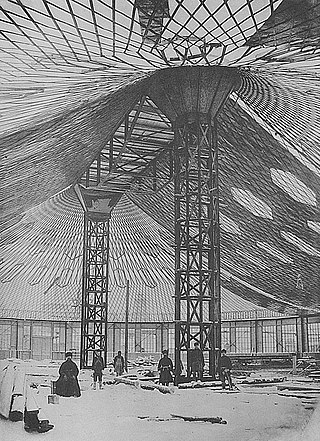
In structural engineering, a tensile structure is a construction of elements carrying only tension and no compression or bending. The term tensile should not be confused with tensegrity, which is a structural form with both tension and compression elements. Tensile structures are the most common type of thin-shell structures.

Wire rope is composed of as few as two solid, metal wires twisted into a helix that forms a composite rope, in a pattern known as laid rope. Larger diameter wire rope consists of multiple strands of such laid rope in a pattern known as cable laid. Manufactured using an industrial machine known as a strander, the wires are fed through a series of barrels and spun into their final composite orientation.

Veer Savarkar International Airport is an airport located 2 km (1.2 mi) south of Port Blair and the primary airport serving the Andaman and Nicobar Islands of India. Earlier known as Port Blair Airport, it was renamed in 2002 after Vinayak Damodar Savarkar, who had been detained in the Cellular Jail in the city for 11 years during India’s freedom struggle. It operates as a civil enclave, sharing airside facilities with INS Utkrosh of the Indian Navy.

Precast concrete is a construction product produced by casting concrete in a reusable mold or "form" which is then cured in a controlled environment, transported to the construction site and maneuvered into place; examples include precast beams, and wall panels for tilt up construction. In contrast, cast-in-place concrete is poured into site-specific forms and cured on site.
This is an alphabetical list of articles pertaining specifically to structural engineering. For a broad overview of engineering, please see List of engineering topics. For biographies please see List of engineers.
Glass fibre reinforced concrete (GFRC) is a type of fibre-reinforced concrete. The product is also known as glassfibre reinforced concrete or GRC in British English. Glass fibre concretes are mainly used in exterior building façade panels and as architectural precast concrete. Somewhat similar materials are fibre cement siding and cement boards.
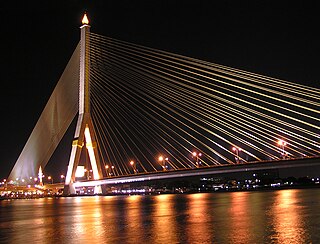
The Rama VIII Bridge is a cable-stayed bridge crossing the Chao Phraya River in Bangkok, Thailand. It was built to alleviate traffic congestion on the nearby Phra Pinklao Bridge. Construction of the bridge took place from 1999 to 2002. The bridge was opened on 7 May 2002 and inaugurated on 20 September, the birth anniversary of the late King Ananda Mahidol, after whom it is named. The bridge has an asymmetrical design, with a single pylon in an inverted Y shape on the west bank of the river. Its eighty-four cables are arranged in pairs on the side of the main span and in a single row on the other. The bridge has a main span of 300 metres (980 ft), and was one of the world's largest asymmetrical cable-stayed bridges at the time of its completion.

Structural engineering depends on the knowledge of materials and their properties, in order to understand how different materials resist and support loads.

Textile-reinforced concrete is a type of reinforced concrete in which the usual steel reinforcing bars are replaced by textile materials. Instead of using a metal cage inside the concrete, this technique uses a fabric cage inside the same.
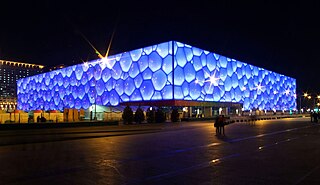
Membrane structures are spatial structures made out of tensioned membranes. The structural use of membranes can be divided into pneumatic structures, tensile membrane structures, and cable domes. In these three kinds of structure, membranes work together with cables, columns and other construction members to find a form.
This information sets out some of the basic considerations taken into account by the lifting design engineer.
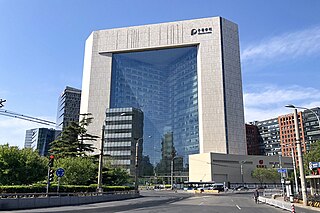
The New Beijing Poly Plaza is a building complex in Beijing, China. Completed in 2007 for the China Poly Group Corporation, it houses the company headquarters, other office space, retail, restaurants, and the Poly Museum.

The Patera Building prototype, a significant example of British high-tech architecture, was manufactured in Stoke-on-Trent in 1982 by Patera Products Ltd. In 1980, Michael Hopkins architects and Anthony Hunt Associates engineers were instructed by LIH (Properties) Ltd to design a relocatable building 216 square metres in size.
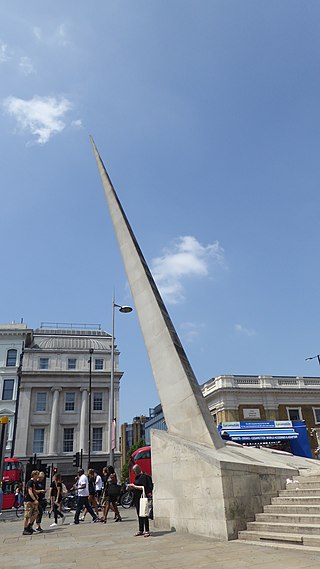
Post-tensioned stone is a high-performance composite construction material: stone held in compression with tension elements. The tension elements can be connected to the outside of the stone, but more typically uses tendons threaded internally through a duct formed from aligned drilled holes.















